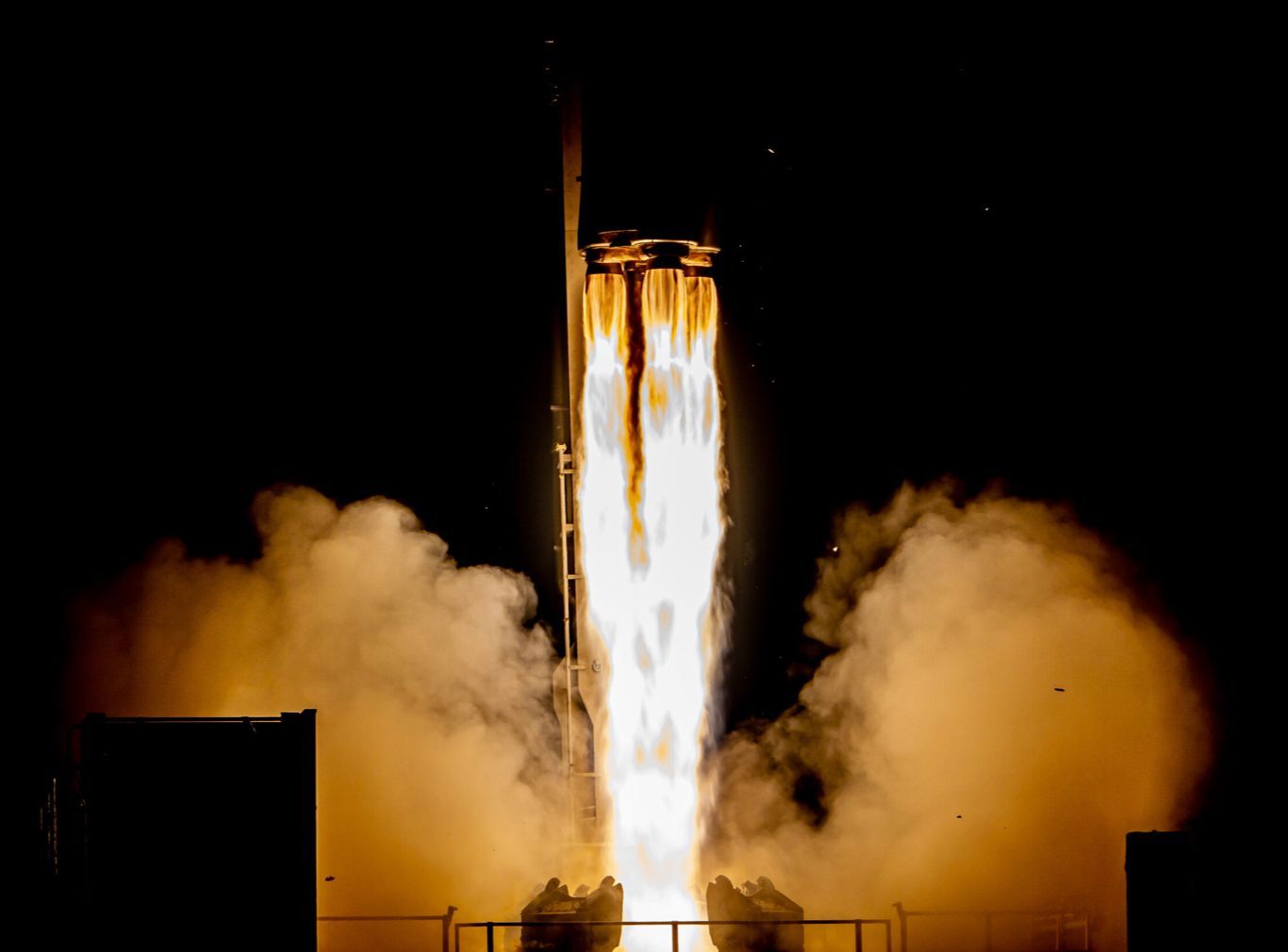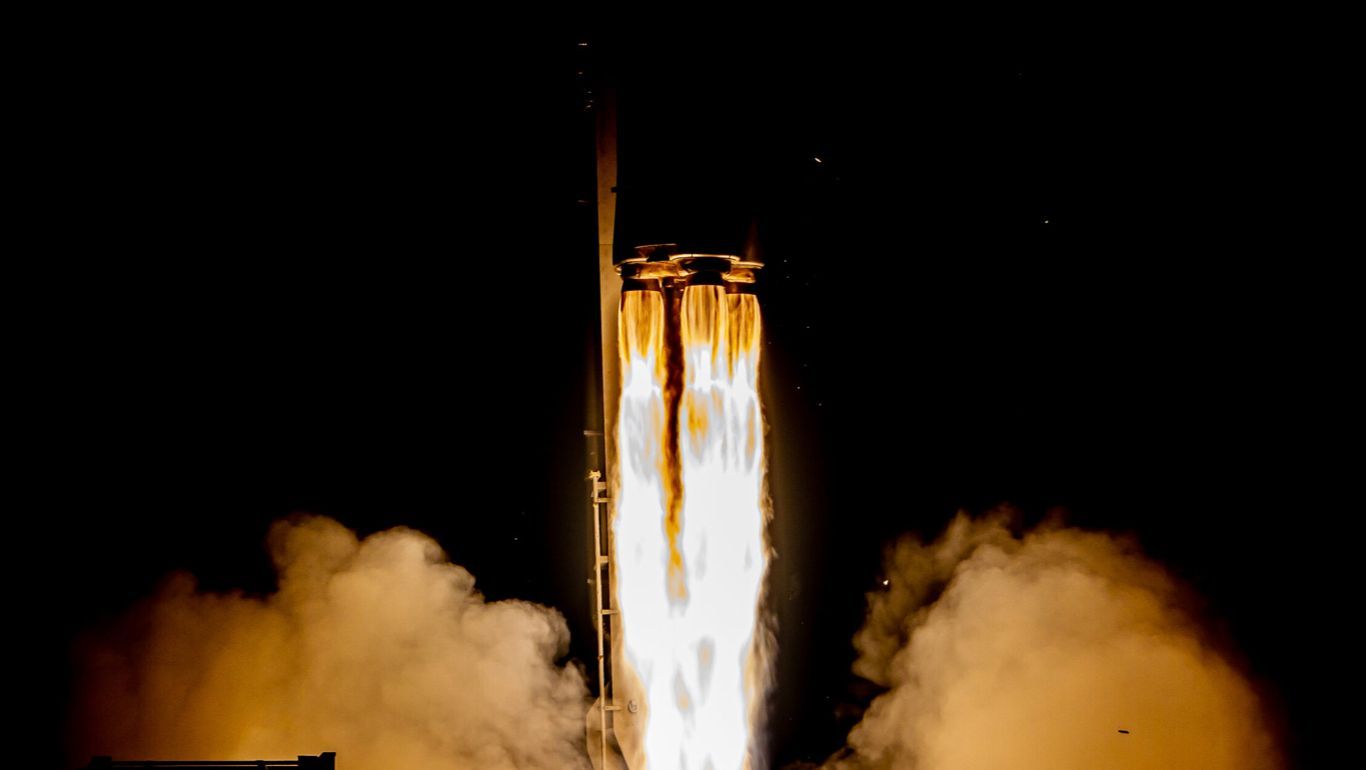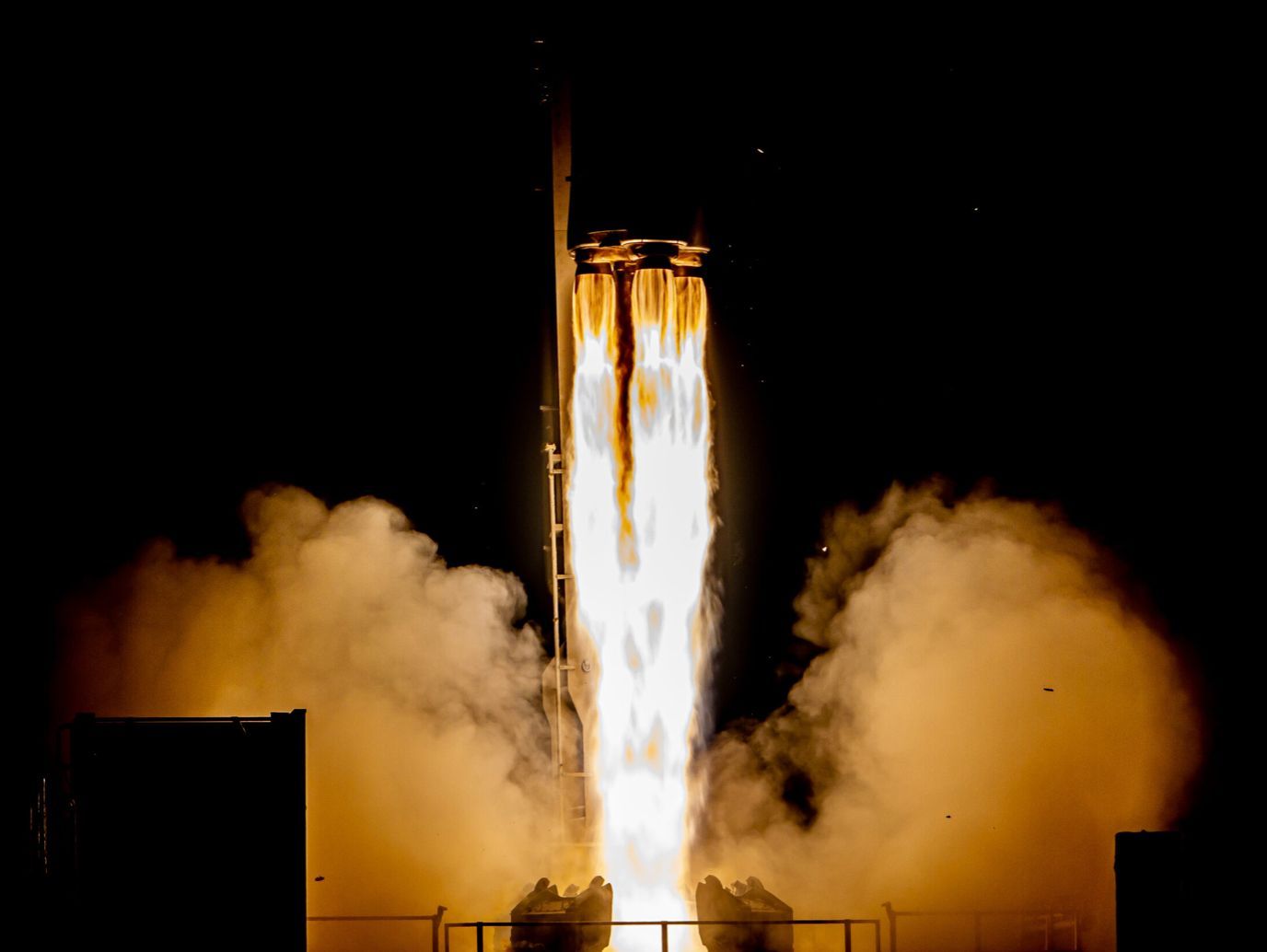26 November 2023

(Adobe)
After news in recent weeks that ESA will adopt the “US model” of purchasing space launch services, rather than develop their own vehicles, more evidence has come to light that commercialisation of the space sector is becoming the “universal model”, with announcements coming out of both the UK and China.
The United Kingdom has set a determined path towards becoming a New Space superpower, with ambitious aims of achieving a 10% stake of the global space industry, annual growth figures of 11% over the next decade and has already become the second most attractive market for private investment, after the Unites States.
This week the Space Clusters and Infrastructure Fund (SCIF), a programme provided by the UK Space Agency that is designed to award match funding to UK organisations to develop space R&D infrastructure, awarded over £47 million (approx $58 million) to 12 projects. As well as awarding public funding, support will be provided to the private sector as well, such to in-space manufacturing startup, Space Forge.
In relation to this, Minister of State at the Department for Science, Innovation and Technology, Andrew Griffith said that "By investing with the private sector in research and facilities across the UK, we are ensuring they become home to global industries that support the growth of our £17.5 billion space sector.”
Chinese entities are also making moves to replicate the roaring success of commercialisation, and just recently we read news regarding launch startups Space Pioneer and Galactic Energy and their efforts to develop reusable launch vehicles similar to SpaceX’s workhorse, Falcon-9.
Adding to this, this week the city of Shanghai have announced that they aim to boost their plan to establish an industrial chain for commercial rocket production. They are hoping for annual production of 50 rockets and 600 commercial satellites by only 2025.
Despite the successful launch rate of the state-funded CALT Long-March series rockets, there appears to be evidence to support a growing commercial sector in China. Just in May this year the China Manned Space Engineering Office (CMSEO) also opened calls for proposals for low-cost commercial transportation to the Tiangong space station.

Firefly Aerospace Alpha Rocket more(Firefly)
Firefly gain funding, Blue Origin aim for Mars contract
Leading space transportation company, Firefly Aerospace (US), has closed another round of funding, which now values the company at $1.5 billion pre-money.
This comes after a series of successes the company has achieved this year, including launching the US Space Force’s tactical responsive launch mission (Victus Nox), gaining multiple launch contracts for their Alpha rocket and winning NASA Commercial Lunar Payload Services (CLPS) contracts for use of their Blue Ghost lunar lander, due to launch in 2026.
Blue Origin have also taken another step forwards, appearing likely to use the first launch of their highly anticipated reusable launch vehicle, New Glenn, to carry a NASA Mars mission. The Escape and Plasma Acceleration and Dynamics Explorers mission (ESCAPADE) will involve sending two spacecraft to measure plasma and magnetic fields around Mars.
Additionally, it also represents a new way NASA is approaching such scientific missions, with it costing only $79 million. The meagre cost of development means that NASA are taking a low-risk approach and can be comfortable placing it on a new, largely untested rocket, New Glenn. This also comes after the news in May that Blue had received a NASA contract to build a crewed lunar lander as part of the Artemis project, and reflects the overall handover of space transportation to the commercial sector.
SpaceX may be the dominant force in the US space sector at the moment, but the recent developments regarding Firefly and Blue go to prove that New Space is also still about competition, which drives innovation and efficiency. Furthermore, it shows that accessibility through diversification may also still be what agencies and governments are looking for, something proven in the recent NASA responsive space launch demonstration, whereby they source quick access to space from a number of different commercial launch partners.
Nonetheless, SpaceX are still ploughing ahead. Last week they carried out a relatively successful second demonstration launch for Starship. On Saturday 18th November, it took off from the Starbase launch site in Texas, reaching a height of 148km, and entering space for the first time. The booster successfully separated from Starship, although was destroyed shortly afterwards, with Starship itself exploding after ground control lost contact with it. It’s believed that an automated self-termination took place.
Although the demonstration fell way short of Starship carrying out a 90 minute flight and gaining reentry, eventually splashing down near Hawaii, it was still celebrated as a success by SpaceX. Elon Musk has gone on to say that another Starship and booster “should be ready to fly in 3 to 4 weeks.” Of course they will still be awaiting an FAA license to do so.
The speed at which SpaceX can be ready to carry out another flight is evidence of the success of their “fail fast” method, allowing to quickly learn, iterate and try again.

(Adobe)
Astrolab Reveals Commercial Partnerships; Astrobotic to Send Dogecoin, and China Expands Lunar Alliance
US-based lunar rover developer, Astrolab, also celebrated success this week, announcing that they have signed contacts with eight commercial customers for their anticipated 2026 mission.
The mission, known as Mission 1, will see their Flexible Logistics and Exploration (FLEX) rover carry payloads for early stage startups, including Argo Space Corp, who will carry out demonstrations for water extraction from lunar soil. Also, Astroport Space will send a payload to test how lunar regolith can be best suited to produce bricks for construction. Additionally, Interstellar Labs will send pods carrying plants, in order to test how they fare in the lunar environment.
Other payloads come from Avalon Space and LifeShip, the latter carrying DNA to test the lunar surface as an offworld seed storage bank. Three payloads were not disclosed.
Astrobotic (US) have also announced an additional payload for their December launch. The Peregrine lunar lander will carry a physical Dogecoin, the popular cryptocurrency, to the lunar surface. “To the moon!” Is a well-known phrase amongst investors and crypto enthusiasts, indicating the rapid growth in value of assets. Doge will now literally be heading there.
Elon Musk is know to be a keen supporter of the currency and there are also still pans for the launch of Doge-1, a satellite funded entirely by Dogecoin, which will be launched into lunar orbit and gather lunar-spatial intelligence. The other main purpose of the satellite is to broadcast images and digital art on a small screen, which will be broadcast back to Earth. The mission is due to launch with the Intuitive Machines (US) lander atop a SpaceX Falcon-9 in January 2024.
China and US look to expand alliances, while North Korea claim to successfully launch military satellite
While we see an increasing pattern of activity on the Moon, both NASA and China have been expanding their global space cooperation strategies. China has added an UAE university to its International Lunar Research Station (ILRS) project, its programme which involves establishing a permanent lunar base and a regulatory vision for the future outer space.
China’s Deep Space Exploration Laboratory (DSEL) and the University of Sharjah (UoS) signed a memorandum of understanding on the 14th November.
While still lagging behind the apposing US-led project, the Artemis Accords, China have tallied up several new members this year, including Belarus, Venezuela and Pakistan.
The US have also been on the hunt for new partners, with the NASA Administrator, Bill Nelson, heading to the UAE and India next week in order to deepen bilateral cooperation. Nelson will also visit Bengaluru where NASA and India are collaborating on the NISAR spacecraft, a joint Earth-observation mission. The US also scored a substantive victory back in June when India signed-on to the Artemis Accords.
In our quest to explore and extract the benefits of space, unity is vital. Commercial innovation continues to rapidly outpace law-making, and there are finite slots both in-orbit and on the Moon. While the the US and Chinese-led efforts show a means by which nations can come together, they also go to prove the emergence of “space blocs”.
This week we also saw North Korea claim to successfully carry out a launch of their military Malligyong-1 satellite. Leader Kim Jong-Un celebrated the launch by calling it a "new era of space power”. While North Korea may celebrate this as a victory in self-defence, the UN and the US condemned the launch, with it also widely believed to be have been partly supported by Russian technology.
In a time of such geopolitical crises, it is a reminder that space is being weaponised and becoming a new frontier of warfare. Yet with true governance and cooperation, and with the abundance of resources it has to offer, space could also be used to unite us.
Our future in space

(SpaceX)
26 November 2023
UK Boosts Space Investment, Firefly and Blue Origin Gain Momentum, Astrolab Reveals Moon Landing Clients - Space News Roundup
After news in recent weeks that ESA will adopt the “US model” of purchasing space launch services, rather than develop their own vehicles, more evidence has come to light that commercialisation of the space sector is becoming the “universal model”, with announcements coming out of both the UK and China.
The United Kingdom has set a determined path towards becoming a New Space superpower, with ambitious aims of achieving a 10% stake of the global space industry, annual growth figures of 11% over the next decade and has already become the second most attractive market for private investment, after the Unites States.
This week the Space Clusters and Infrastructure Fund (SCIF), a programme provided by the UK Space Agency that is designed to award match funding to UK organisations to develop space R&D infrastructure, awarded over £47 million (approx $58 million) to 12 projects. As well as awarding public funding, support will be provided to the private sector as well, such to in-space manufacturing startup, Space Forge.
In relation to this, Minister of State at the Department for Science, Innovation and Technology, Andrew Griffith said that "By investing with the private sector in research and facilities across the UK, we are ensuring they become home to global industries that support the growth of our £17.5 billion space sector.”
Chinese entities are also making moves to replicate the roaring success of commercialisation, and just recently we read news regarding launch startups Space Pioneer and Galactic Energy and their efforts to develop reusable launch vehicles similar to SpaceX’s workhorse, Falcon-9.
Adding to this, this week the city of Shanghai have announced that they aim to boost their plan to establish an industrial chain for commercial rocket production. They are hoping for annual production of 50 rockets and 600 commercial satellites by only 2025.
Despite the successful launch rate of the state-funded CALT Long-March series rockets, there appears to be evidence to support a growing commercial sector in China. Just in May this year the China Manned Space Engineering Office (CMSEO) also opened calls for proposals for low-cost commercial transportation to the Tiangong space station.

Firefly Aerospace Alpha Rocket more(Firefly)
Firefly gain funding, Blue Origin aim for Mars contract
Leading space transportation company, Firefly Aerospace (US), has closed another round of funding, which now values the company at $1.5 billion pre-money.
This comes after a series of successes the company has achieved this year, including launching the US Space Force’s tactical responsive launch mission (Victus Nox), gaining multiple launch contracts for their Alpha rocket and winning NASA Commercial Lunar Payload Services (CLPS) contracts for use of their Blue Ghost lunar lander, due to launch in 2026.
Blue Origin have also taken another step forwards, appearing likely to use the first launch of their highly anticipated reusable launch vehicle, New Glenn, to carry a NASA Mars mission. The Escape and Plasma Acceleration and Dynamics Explorers mission (ESCAPADE) will involve sending two spacecraft to measure plasma and magnetic fields around Mars.
Additionally, it also represents a new way NASA is approaching such scientific missions, with it costing only $79 million. The meagre cost of development means that NASA are taking a low-risk approach and can be comfortable placing it on a new, largely untested rocket, New Glenn. This also comes after the news in May that Blue had received a NASA contract to build a crewed lunar lander as part of the Artemis project, and reflects the overall handover of space transportation to the commercial sector.
SpaceX may be the dominant force in the US space sector at the moment, but the recent developments regarding Firefly and Blue go to prove that New Space is also still about competition, which drives innovation and efficiency. Furthermore, it shows that accessibility through diversification may also still be what agencies and governments are looking for, something proven in the recent NASA responsive space launch demonstration, whereby they source quick access to space from a number of different commercial launch partners.
Nonetheless, SpaceX are still ploughing ahead. Last week they carried out a relatively successful second demonstration launch for Starship. On Saturday 18th November, it took off from the Starbase launch site in Texas, reaching a height of 148km, and entering space for the first time. The booster successfully separated from Starship, although was destroyed shortly afterwards, with Starship itself exploding after ground control lost contact with it. It’s believed that an automated self-termination took place.
Although the demonstration fell way short of Starship carrying out a 90 minute flight and gaining reentry, eventually splashing down near Hawaii, it was still celebrated as a success by SpaceX. Elon Musk has gone on to say that another Starship and booster “should be ready to fly in 3 to 4 weeks.” Of course they will still be awaiting an FAA license to do so.
The speed at which SpaceX can be ready to carry out another flight is evidence of the success of their “fail fast” method, allowing to quickly learn, iterate and try again.

Dogecoin heading for the moon, literally(Adobe)
Astrolab Reveals Commercial Partnerships; Astrobotic to Send Dogecoin, and China Expands Lunar Alliance
US-based lunar rover developer, Astrolab, also celebrated success this week, announcing that they have signed contacts with eight commercial customers for their anticipated 2026 mission.
The mission, known as Mission 1, will see their Flexible Logistics and Exploration (FLEX) rover carry payloads for early stage startups, including Argo Space Corp, who will carry out demonstrations for water extraction from lunar soil. Also, Astroport Space will send a payload to test how lunar regolith can be best suited to produce bricks for construction. Additionally, Interstellar Labs will send pods carrying plants, in order to test how they fare in the lunar environment.
Other payloads come from Avalon Space and LifeShip, the latter carrying DNA to test the lunar surface as an offworld seed storage bank. Three payloads were not disclosed.
Astrobotic (US) have also announced an additional payload for their December launch. The Peregrine lunar lander will carry a physical Dogecoin, the popular cryptocurrency, to the lunar surface. “To the moon!” Is a well-known phrase amongst investors and crypto enthusiasts, indicating the rapid growth in value of assets. Doge will now literally be heading there.
Elon Musk is know to be a keen supporter of the currency and there are also still pans for the launch of Doge-1, a satellite funded entirely by Dogecoin, which will be launched into lunar orbit and gather lunar-spatial intelligence. The other main purpose of the satellite is to broadcast images and digital art on a small screen, which will be broadcast back to Earth. The mission is due to launch with the Intuitive Machines (US) lander atop a SpaceX Falcon-9 in January 2024.
China and US look to expand alliances, while North Korea claim to successfully launch military satellite
While we see an increasing pattern of activity on the Moon, both NASA and China have been expanding their global space cooperation strategies. China has added an UAE university to its International Lunar Research Station (ILRS) project, its programme which involves establishing a permanent lunar base and a regulatory vision for the future outer space.
China’s Deep Space Exploration Laboratory (DSEL) and the University of Sharjah (UoS) signed a memorandum of understanding on the 14th November.
While still lagging behind the apposing US-led project, the Artemis Accords, China have tallied up several new members this year, including Belarus, Venezuela and Pakistan.
The US have also been on the hunt for new partners, with the NASA Administrator, Bill Nelson, heading to the UAE and India next week in order to deepen bilateral cooperation. Nelson will also visit Bengaluru where NASA and India are collaborating on the NISAR spacecraft, a joint Earth-observation mission. The US also scored a substantive victory back in June when India signed-on to the Artemis Accords.
In our quest to explore and extract the benefits of space, unity is vital. Commercial innovation continues to rapidly outpace law-making, and there are finite slots both in-orbit and on the Moon. While the the US and Chinese-led efforts show a means by which nations can come together, they also go to prove the emergence of “space blocs”.
This week we also saw North Korea claim to successfully carry out a launch of their military Malligyong-1 satellite. Leader Kim Jong-Un celebrated the launch by calling it a "new era of space power”. While North Korea may celebrate this as a victory in self-defence, the UN and the US condemned the launch, with it also widely believed to be have been partly supported by Russian technology.
In a time of such geopolitical crises, it is a reminder that space is being weaponised and becoming a new frontier of warfare. Yet with true governance and cooperation, and with the abundance of resources it has to offer, space could also be used to unite us.
Share this article
26 November 2023
UK Boosts Space Investment, Firefly and Blue Origin Gain Momentum, Astrolab Reveals Moon Landing Clients - Space News Roundup

(Adobe)
After news in recent weeks that ESA will adopt the “US model” of purchasing space launch services, rather than develop their own vehicles, more evidence has come to light that commercialisation of the space sector is becoming the “universal model”, with announcements coming out of both the UK and China.
The United Kingdom has set a determined path towards becoming a New Space superpower, with ambitious aims of achieving a 10% stake of the global space industry, annual growth figures of 11% over the next decade and has already become the second most attractive market for private investment, after the Unites States.
This week the Space Clusters and Infrastructure Fund (SCIF), a programme provided by the UK Space Agency that is designed to award match funding to UK organisations to develop space R&D infrastructure, awarded over £47 million (approx $58 million) to 12 projects. As well as awarding public funding, support will be provided to the private sector as well, such to in-space manufacturing startup, Space Forge.
In relation to this, Minister of State at the Department for Science, Innovation and Technology, Andrew Griffith said that "By investing with the private sector in research and facilities across the UK, we are ensuring they become home to global industries that support the growth of our £17.5 billion space sector.”
Chinese entities are also making moves to replicate the roaring success of commercialisation, and just recently we read news regarding launch startups Space Pioneer and Galactic Energy and their efforts to develop reusable launch vehicles similar to SpaceX’s workhorse, Falcon-9.
Adding to this, this week the city of Shanghai have announced that they aim to boost their plan to establish an industrial chain for commercial rocket production. They are hoping for annual production of 50 rockets and 600 commercial satellites by only 2025.
Despite the successful launch rate of the state-funded CALT Long-March series rockets, there appears to be evidence to support a growing commercial sector in China. Just in May this year the China Manned Space Engineering Office (CMSEO) also opened calls for proposals for low-cost commercial transportation to the Tiangong space station.

Firefly Aerospace Alpha Rocket more(Firefly)
Firefly gain funding, Blue Origin aim for Mars contract
Leading space transportation company, Firefly Aerospace (US), has closed another round of funding, which now values the company at $1.5 billion pre-money.
This comes after a series of successes the company has achieved this year, including launching the US Space Force’s tactical responsive launch mission (Victus Nox), gaining multiple launch contracts for their Alpha rocket and winning NASA Commercial Lunar Payload Services (CLPS) contracts for use of their Blue Ghost lunar lander, due to launch in 2026.
Blue Origin have also taken another step forwards, appearing likely to use the first launch of their highly anticipated reusable launch vehicle, New Glenn, to carry a NASA Mars mission. The Escape and Plasma Acceleration and Dynamics Explorers mission (ESCAPADE) will involve sending two spacecraft to measure plasma and magnetic fields around Mars.
Additionally, it also represents a new way NASA is approaching such scientific missions, with it costing only $79 million. The meagre cost of development means that NASA are taking a low-risk approach and can be comfortable placing it on a new, largely untested rocket, New Glenn. This also comes after the news in May that Blue had received a NASA contract to build a crewed lunar lander as part of the Artemis project, and reflects the overall handover of space transportation to the commercial sector.
SpaceX may be the dominant force in the US space sector at the moment, but the recent developments regarding Firefly and Blue go to prove that New Space is also still about competition, which drives innovation and efficiency. Furthermore, it shows that accessibility through diversification may also still be what agencies and governments are looking for, something proven in the recent NASA responsive space launch demonstration, whereby they source quick access to space from a number of different commercial launch partners.
Nonetheless, SpaceX are still ploughing ahead. Last week they carried out a relatively successful second demonstration launch for Starship. On Saturday 18th November, it took off from the Starbase launch site in Texas, reaching a height of 148km, and entering space for the first time. The booster successfully separated from Starship, although was destroyed shortly afterwards, with Starship itself exploding after ground control lost contact with it. It’s believed that an automated self-termination took place.
Although the demonstration fell way short of Starship carrying out a 90 minute flight and gaining reentry, eventually splashing down near Hawaii, it was still celebrated as a success by SpaceX. Elon Musk has gone on to say that another Starship and booster “should be ready to fly in 3 to 4 weeks.” Of course they will still be awaiting an FAA license to do so.
The speed at which SpaceX can be ready to carry out another flight is evidence of the success of their “fail fast” method, allowing to quickly learn, iterate and try again.

Firefly Aerospace Alpha Rocket more(Firefly)
Astrolab Reveals Commercial Partnerships; Astrobotic to Send Dogecoin, and China Expands Lunar Alliance
US-based lunar rover developer, Astrolab, also celebrated success this week, announcing that they have signed contacts with eight commercial customers for their anticipated 2026 mission.
The mission, known as Mission 1, will see their Flexible Logistics and Exploration (FLEX) rover carry payloads for early stage startups, including Argo Space Corp, who will carry out demonstrations for water extraction from lunar soil. Also, Astroport Space will send a payload to test how lunar regolith can be best suited to produce bricks for construction. Additionally, Interstellar Labs will send pods carrying plants, in order to test how they fare in the lunar environment.
Other payloads come from Avalon Space and LifeShip, the latter carrying DNA to test the lunar surface as an offworld seed storage bank. Three payloads were not disclosed.
Astrobotic (US) have also announced an additional payload for their December launch. The Peregrine lunar lander will carry a physical Dogecoin, the popular cryptocurrency, to the lunar surface. “To the moon!” Is a well-known phrase amongst investors and crypto enthusiasts, indicating the rapid growth in value of assets. Doge will now literally be heading there.
Elon Musk is know to be a keen supporter of the currency and there are also still pans for the launch of Doge-1, a satellite funded entirely by Dogecoin, which will be launched into lunar orbit and gather lunar-spatial intelligence. The other main purpose of the satellite is to broadcast images and digital art on a small screen, which will be broadcast back to Earth. The mission is due to launch with the Intuitive Machines (US) lander atop a SpaceX Falcon-9 in January 2024.
China and US look to expand alliances, while North Korea claim to successfully launch military satellite
While we see an increasing pattern of activity on the Moon, both NASA and China have been expanding their global space cooperation strategies. China has added an UAE university to its International Lunar Research Station (ILRS) project, its programme which involves establishing a permanent lunar base and a regulatory vision for the future outer space.
China’s Deep Space Exploration Laboratory (DSEL) and the University of Sharjah (UoS) signed a memorandum of understanding on the 14th November.
While still lagging behind the apposing US-led project, the Artemis Accords, China have tallied up several new members this year, including Belarus, Venezuela and Pakistan.
The US have also been on the hunt for new partners, with the NASA Administrator, Bill Nelson, heading to the UAE and India next week in order to deepen bilateral cooperation. Nelson will also visit Bengaluru where NASA and India are collaborating on the NISAR spacecraft, a joint Earth-observation mission. The US also scored a substantive victory back in June when India signed-on to the Artemis Accords.
In our quest to explore and extract the benefits of space, unity is vital. Commercial innovation continues to rapidly outpace law-making, and there are finite slots both in-orbit and on the Moon. While the the US and Chinese-led efforts show a means by which nations can come together, they also go to prove the emergence of “space blocs”.
This week we also saw North Korea claim to successfully carry out a launch of their military Malligyong-1 satellite. Leader Kim Jong-Un celebrated the launch by calling it a "new era of space power”. While North Korea may celebrate this as a victory in self-defence, the UN and the US condemned the launch, with it also widely believed to be have been partly supported by Russian technology.
In a time of such geopolitical crises, it is a reminder that space is being weaponised and becoming a new frontier of warfare. Yet with true governance and cooperation, and with the abundance of resources it has to offer, space could also be used to unite us.
Share this article
External Links
This Week
*News articles posted here are not property of ANASDA GmbH and belong to their respected owners. Postings here are external links only.









